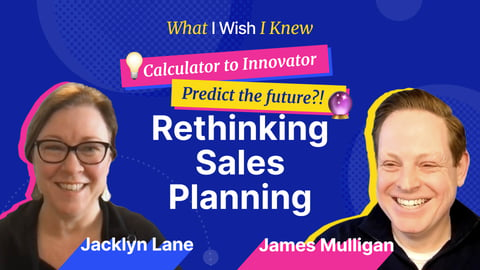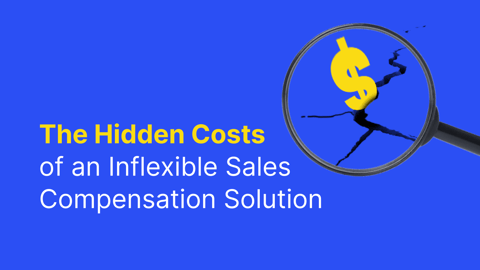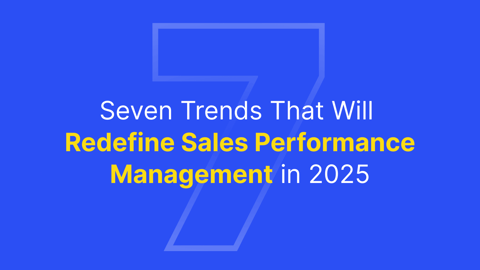Question for you: What do you think is more important to be successful in sales – a) a rapid-fire, on-the-spot response and action to a sales opportunity or potential customer crisis (act now, earn now, sort out the details down the line), or b) a measured approach that uses analytics and insight through SPM software to build a solid business strategy and watertight customer relationship (slowly, slowly, catchy monkey – and commission)? If you answered a), then we’ll take an educated guess that you live in the moment, have your eye on the prize, and when you do use SPM software, it’s to check your position on the leader-board and compensation figures. If, however you answered b), you’ll already have an idea of how vital a strong, single-platform piece of SPM software can be. For the following blog, regardless of your answer, read on and grab some top tips on how that software can help you to increase revenue steadily over time while reducing that old bugbear, seller churn – in other words, customer turnover.
Churn Rate Counts
Of all the numbers that may come your way via SPM software, spreadsheet, CEO announcement, or smoke signal, this is a number that matters – especially when it spikes and represents a permanent breakdown of relations with your customer, creating seller churn. If you and your team are simply taking a one-view glance at a dashboard and interpreting a drop as loss of interest, that doesn’t consider the relationship between the sales executive and the customer, interest in the product, or whether the person handling the account has followed up on the initial sale further down the sales cycle.
The Knee-Jerk Response to Seller Churn
If there is a pattern of customer loss, just based on cold, hard metrics, the knee-jerk reaction would be to get your sales team to “up their game”. If you answered a) to that opening question, that could mean adjusting quotas, widening territories, flexing incentive compensation targets. Or maybe rather than dwelling on the loss, your immediate strategy is to urge your team to ring out every ounce of juice from the “prospects / leads” stage of your sales cycle, which if successful, replaces the physical and monetary void of the lost customer / seller. However, while that sticking plaster approach may temporarily stop the flow of outgoing customers, there is no real understanding of what caused the churn. So, what’s to stop that pattern of desertion from becoming a bad and unprofitable habit?
Using Insight and Analytics to Avoid the Seller Churn Break
Another question. If a key, personal relationship in your life is in trouble, do you wait until one of you is on the verge of burning down the house before you seek professional help; do you just think ‘it’s all their fault, I’m blameless’ and walk away; or are you one of those people that regularly takes time out with your partner to read the signs, and has the therapist on the backburner (just in case)?
Seller churn isn’t that different. You should be able to recognise the relationship and account with your customer is rocky long before they pull the plug. So, how do you do that? The majority of the answer lies within how you use your SPM software platform.
Looking beyond the visible metrics is essential to understand and maybe stop customer churn. A robust SPM solution will be able to break down the entire history of the relationship, including:
- How much contact the allocated salesperson has with the customer, by which method, and when?
- A view of the entire contract
- What’s going on across that wider territory?
- Who are the local competitors?
- How is this salesperson / sales team performing across other accounts?
Diving down even further, when it comes to increased seller churn, it’s not just about the post-mortem and blame game when all the above is up for forensic examination and jobs may be on the line. Rather than getting to this stage, harnessing the immediate power of SPM software by utilising the following:
- Territory and Quota Management: Planning and allocating removes the guesswork and ensures optimal seller performance. Using analytics reduces the opportunity for a team member to say they were overloaded with other customers or assumed someone else was communicating with the customer. Territory and Quote Management can also be customised to include a program of contact times and occasions with the customer, so no opportunity across the sales pipeline and beyond is missed.
- Revenue Intelligence: Securing a customer relationship and securing a purchase is what lies at either end of the ideal sales pipeline. However, missing a vital step or piece of information early on can be a factor in why that relationship erodes at a later stage. Varicent’s Lead to Revenue solution should deliver more than a roadmap and dashboards to get your team through the pipeline – it should track pick-up rates, response times, and all the reporting tools that help guide sales reps and shape their behaviours beyond celebrating the initial sale. By absorbing the analytics available, these same sales reps can avoid the pitfalls of seller churn and take a more long-term approach that still results in increased revenue.
- Augmented Intelligence: In this new age of dazzling sales insight that you can understand, you’d be silly to swerve the software that really can make a difference to seller churn rates. Platforms and applications such as Symon.AI allow you to create possible scenarios and “what ifs” before taking the plunge on a potentially transformative strategic step. Moreover, in the case of reducing seller churn, you can safely execute programs that demonstrate the true cost of regularly losing accounts versus how this can be avoided with more customer nurturing. This next-level insight can also be utilised to better understand a customer’s ongoing need, their purchasing habits, and what could make them move to a competitor.
In summary, while the sales professionals' “killer instinct” to secure a customer and move past a loss is indeed a skill, for any business that wants to avoid churn, they need a combination of software and common sense to keep the customer satisfied and signing contracts.
Discover more about Varicent’s software solutions by visiting us here.



